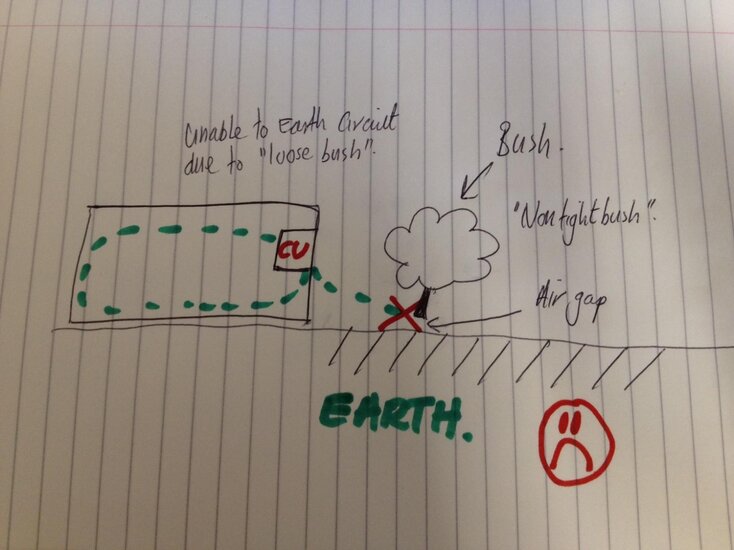I am about to wire my own integral garage. I use it as a workshop so I am thinking about running singles in galv conduit. I've not used singles before and I've only ever used galv conduit to protect T&E run outside of safe zones.
I haven't been able to find any good information on singles / conduit – either books or internet resources (I would be interested if anyone can point me at any) – so I have some rather basic questions I'm afraid. Really, it's earthing that I am unsure of …
I'm planning on running the T&E from the ring main and lighting circuit from an adjacent room through the wall into a conduit box in the garage and then using wagos to go from T&E to singles. I'm planning on running the ring main and lighting circuit in the same galv conduit, each with it's own cpc … I assume that this is correct?
So far it seems the same as T&E except I've got conduit instead of sheaths (ok, I know that switch drops are normally wired a little differently). The problem comes when I earth the conduit … how should this be done? I assume I should use a flying lead from each socket / switch plate to the metal box, but this will connect the cpc of the lighting circuit and the cpc of the ring main together … is that correct / ok?
How does that effect testing? Should I check cpc continuity before connecting the flying leads to boxes / conduit?
I suppose I could just use PVC conduit instead, but I would rather learn how to do it properly
I haven't been able to find any good information on singles / conduit – either books or internet resources (I would be interested if anyone can point me at any) – so I have some rather basic questions I'm afraid. Really, it's earthing that I am unsure of …
I'm planning on running the T&E from the ring main and lighting circuit from an adjacent room through the wall into a conduit box in the garage and then using wagos to go from T&E to singles. I'm planning on running the ring main and lighting circuit in the same galv conduit, each with it's own cpc … I assume that this is correct?
So far it seems the same as T&E except I've got conduit instead of sheaths (ok, I know that switch drops are normally wired a little differently). The problem comes when I earth the conduit … how should this be done? I assume I should use a flying lead from each socket / switch plate to the metal box, but this will connect the cpc of the lighting circuit and the cpc of the ring main together … is that correct / ok?
How does that effect testing? Should I check cpc continuity before connecting the flying leads to boxes / conduit?
I suppose I could just use PVC conduit instead, but I would rather learn how to do it properly










